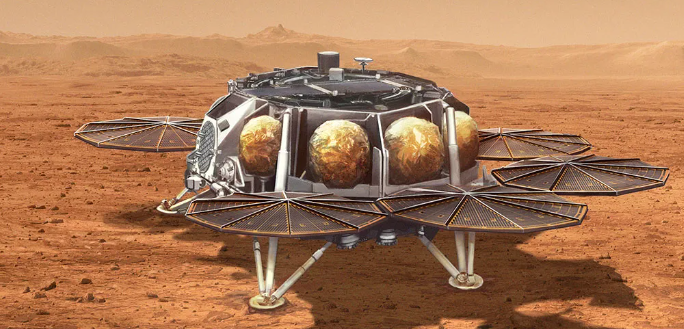NASA’s Funding Terrain: Impact on Mars Sample Return (GS Paper 3, Technology)

Introduction
- NASA's recent allocation of funding, approximately $1.5 million each to seven companies, marks a significant step towards addressing the financial and logistical challenges of the Mars Sample Return (MSR) project.
- With the estimated cost of the mission hovering around $11 billion, the initiative aims to explore more cost-effective mission architectures, ultimately reducing expenses, mitigating risks, and expediting mission completion.
Understanding the Mars Sample Return (MSR) Mission
- The MSR mission represents a complex, multi-stage endeavor aimed at retrieving samples from the Martian surface and returning them to Earth for comprehensive study.
- Collaboration between NASA and the European Space Agency (ESA) underscores the mission's significance in unraveling Mars's early history and shedding light on the formation and evolution of habitable worlds.
Challenges of the Original MSR Plan
- Initially, the MSR plans centered around deploying a Mars Ascent Vehicle (MAV) to retrieve samples collected by the Perseverance rover, subsequently launching them into Mars orbit for retrieval by another spacecraft bound for Earth.
- However, this approach poses substantial financial and technical hurdles due to its intricacies and the requisite number of launches involved.
Engagement of Companies and Academic Groups
- To address these challenges, NASA has enlisted the expertise of aerospace companies and academic groups, including Lockheed Martin, SpaceX, Blue Origin, Quantum Space, and Northrop Grumman.
- Each entity will conduct a series of three-month studies aimed at devising innovative approaches to streamline the MSR mission.
- By leveraging a collaborative effort, the goal is to optimize mission design, driving down costs, enhancing efficiency, and minimizing risks.
Impact of Funding Allocation on MSR
- The infusion of funding into the MSR project signifies a concerted effort to overcome existing obstacles and propel the mission forward.
- By fostering collaboration and innovation within the aerospace industry and academia, NASA aims to unlock new pathways for achieving the objectives of the MSR mission while staying within budgetary constraints.
- Ultimately, the success of these studies holds the promise of accelerating progress towards realizing the ambitious goal of returning Martian samples to Earth for scientific exploration.


